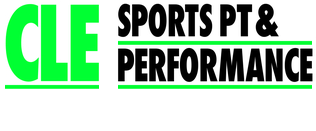Fall sports begin in a few weeks here in the CLE. And while most of us can’t wait for the return of “Friday Night Lights,” soccer matches, and volleyball games, it’s important to remember how to keep our youth athletes safe during the excitement. This includes recognizing injuries and finding medical care as they happen.
In part 1 of this article, I’ll talk about how to know when an athlete has a concussion. Immediate identification of these injuries is important– if an athlete returns to play with an undiagnosed concussion, they are at risk for second impact syndrome. This occurs when an athlete suffers a second concussion before the brain can recover from the first insult. Second impact syndrome can cause permanent brain damage and even death.
Stay tuned for part 2 and 3 where I’ll discuss differences in concussion symptoms and recovery time between men and women, recent news and controversy around concussions in sport, and the possible link between concussions and other injuries.
How to Recognize Concussions in Student Athletes
A concussion is defined as a mild traumatic brain injury. In the United States, an estimated 300,000 sports-related concussions occur annually.
In high school gender-comparable sports, girls have a higher concussion rate than boys. Female athletes have also been shown to have a greater length in post-concussion symptoms as compared to men.
How To Look for Signs of a Concussion
Any athlete who has lost consciousness during a sports-related impact must be removed from competition and examined for a concussion or a spine injury. Most concussion symptoms are present right after the injury, however some can take several hours. Often, symptoms worsen with activity or stress.
A headache is the most common complaint of an athlete with a concussion, but any of the following can be present:
- Loss of consciousness
- Feeling in a “fog”
- Difficulty remembering
- Behavioral changes (irritability, rapid changes in mood, exaggerated emotions, aggressiveness, depression, decreased tolerance to stress, etc…)
- Nausea/vomiting
- Difficulty with balance
- Pupils that are enlarged or not equal in size
- Double or blurred vision
- Slurred speech
- Difficulty falling asleep
- Excessive drowsiness
What to do if you suspect a concussion in an athlete:
- Do not allow the athlete to return to any sporting event.
- Allow the athlete to rest until there is a resolution of symptoms. This allows the brain to recover. Rest involves allowing time to sleep or take frequent naps. Minimizing distractions such as television, internet, reading, or phone use is important.
- It is unnecessary to wake the athlete up every hour. This disturbs sleep patterns which can interfere with the healing process of the brain.
- The athlete should avoid pain relievers such as aspirin or other anti-inflammatory medications. These may increase risk of bleeding in the brain.
- Do not leave the athlete left alone after the injury. Monitor symptoms closely if they worsen, the athlete should go to the Emergency Room to decide if a more serious brain injury exists.
Related Resources:
- Physical Therapist’s Guide to Concussion
- Podcast: Concussion: Head in the Game’ Series on Concussion in Sports
References
- McCrory P, Meeuwisse, WH, Aubry M, Cantu B et al. Consensus statement on concussion in sport: the 4th international conference on Concussion in Sport held in Zurich, November 2012. Br J Sports Med 2013;47:250–258
- Covassin T, Schatz P, Swanik CB. Sex differences in neuropsychological function and post-concussion symtpoms of concussed collegiate athletes. Neurosurg 2007; 61(2):345-51.
- Farace E, Alves WM: Do women fare worse? A meta-analysis of gender differences in traumatic brain injury outcome. J Neurosurg 2000; 93:539–545
- Broshek DK, Kaushik T, Freeman JR, Erlanger D, Webbe F, Barth JT. Sex differences in outcome following sports-related concussion. J Neurosurg 2005; 102:856-63.
- Gessel LM, Fields SK, Collins CL, Dick RW, Comstock RD. Concussions among United States high school and collegiate athletes. J Athl Tr 2007; 42(4):495-503.

